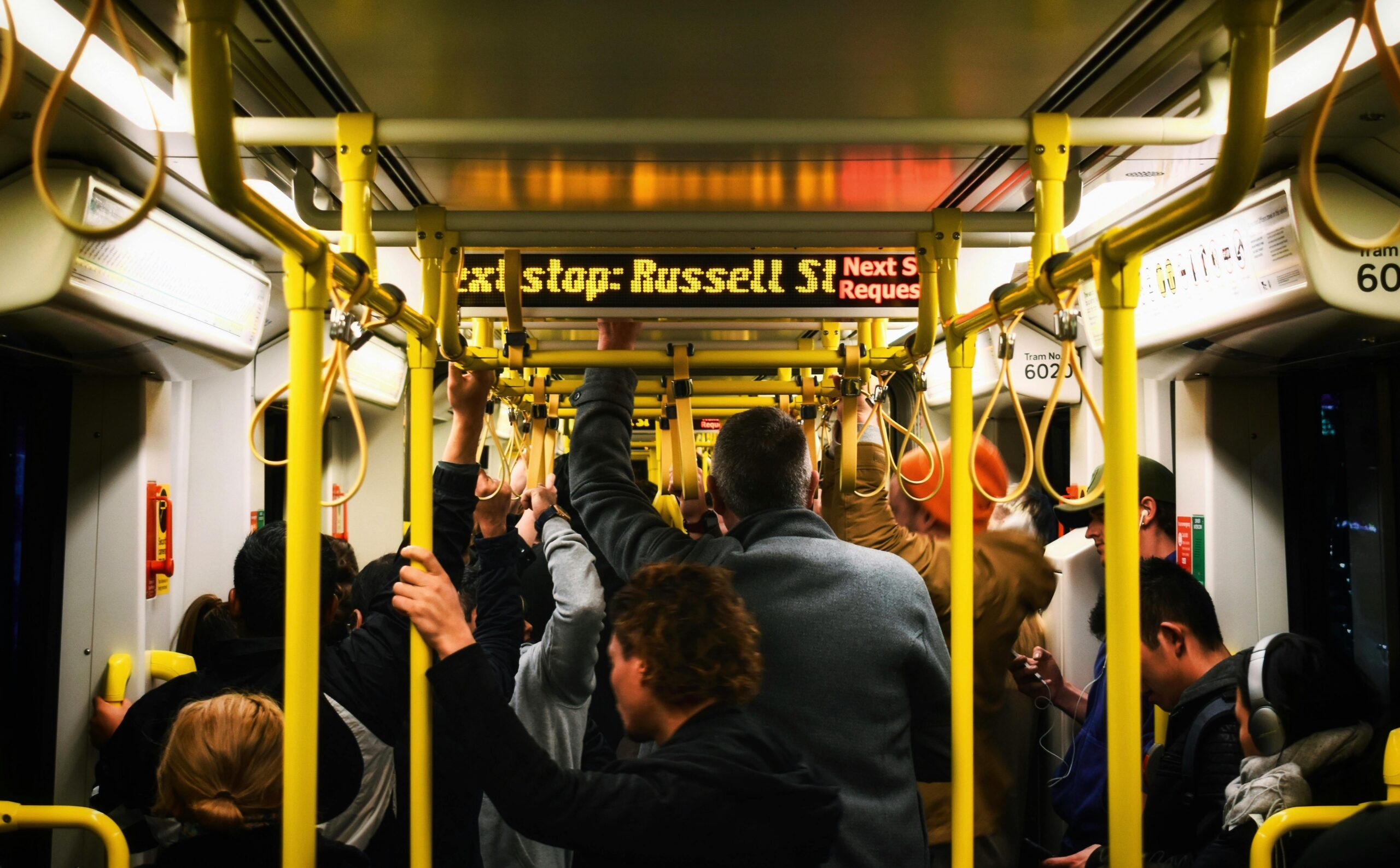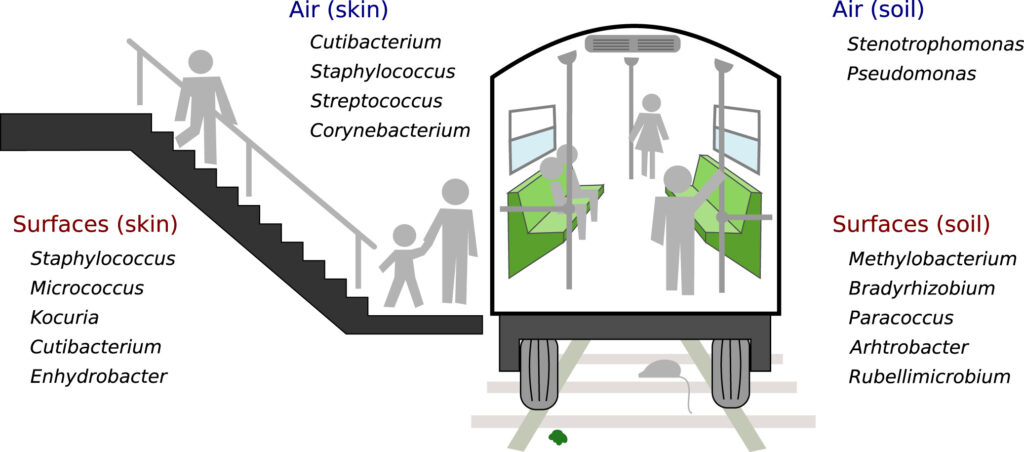🚇 Little story of microbiome in the public transportation systems

While commuting, you can cross thousands of human beings. But in reality one crosses many more individuals. Underground, millions of people use the public transportation systems, and billions of microscopic passengers on their daily journeys. They are bacteria, fungi, viruses and archaea. These microorganisms inhabit every corner of the subway environment, forming intricate ecological networks that reflect the dynamic interplay between humans and their built environment.
Where do they come from?
Some hitch a ride on the skin and clothing of commuters, while others are transported via airborne particles or contaminated surfaces. Once inside the subway environment, these microbial pioneers adapt to their new surroundings, forming resilient communities capable of surviving and thriving in the buried landscape. Moreover the composition of the subway microbiome is as diverse as the cities they inhabit, reflecting the unique environmental conditions and human activities that shape each metro system.
The most intriguing aspect of the subway microbiome lies in its potential as a tool for tracking and monitoring societal changes over time using advanced bioinformatics methods. Just as archaeologists uncover clues about past civilizations from layers of sediment in ancient ruins, researchers can glean insights into the evolution of modern society from microbial signatures preserved in subway systems. By analyzing changes in the microbial composition of subway systems over time using metagenomic sequencing, researchers can track shifts in population demographics, evolving public health practices, and even the emergence of new infectious diseases.

So, the next time you’re squeezed into a crowded subway car, take a moment to appreciate the vibrant microbial world around you.
And remember, while we’re having a blast exploring this microbial jungle gym, we’re also uncovering valuable insights that can help keep our cities safe and healthy. It’s microbiology with a dash of adventure – all aboard the germ train! 🚄
Learn more from the original scientific article: https://onlinelibrary.wiley.com/doi/10.1111/mec.16440
